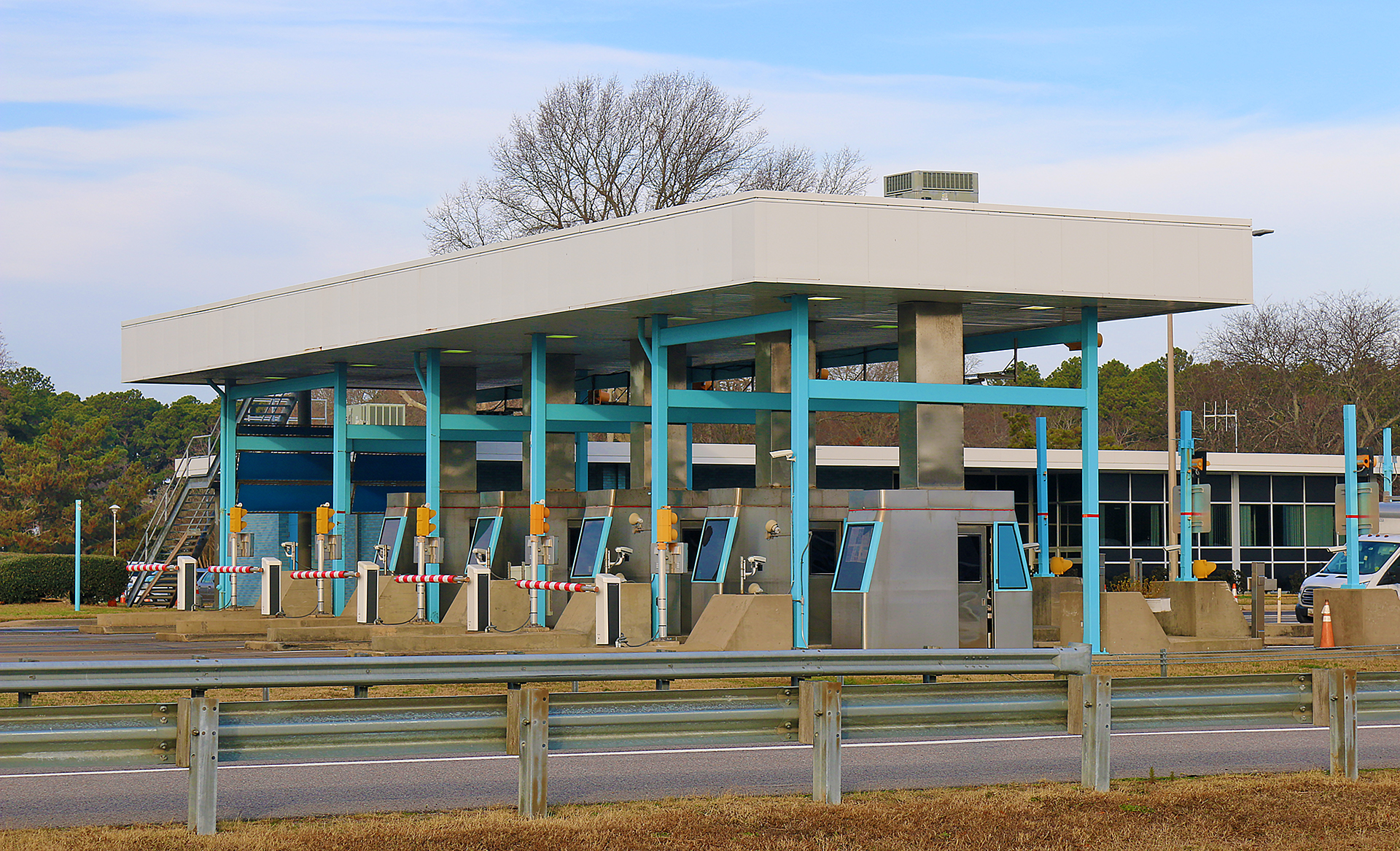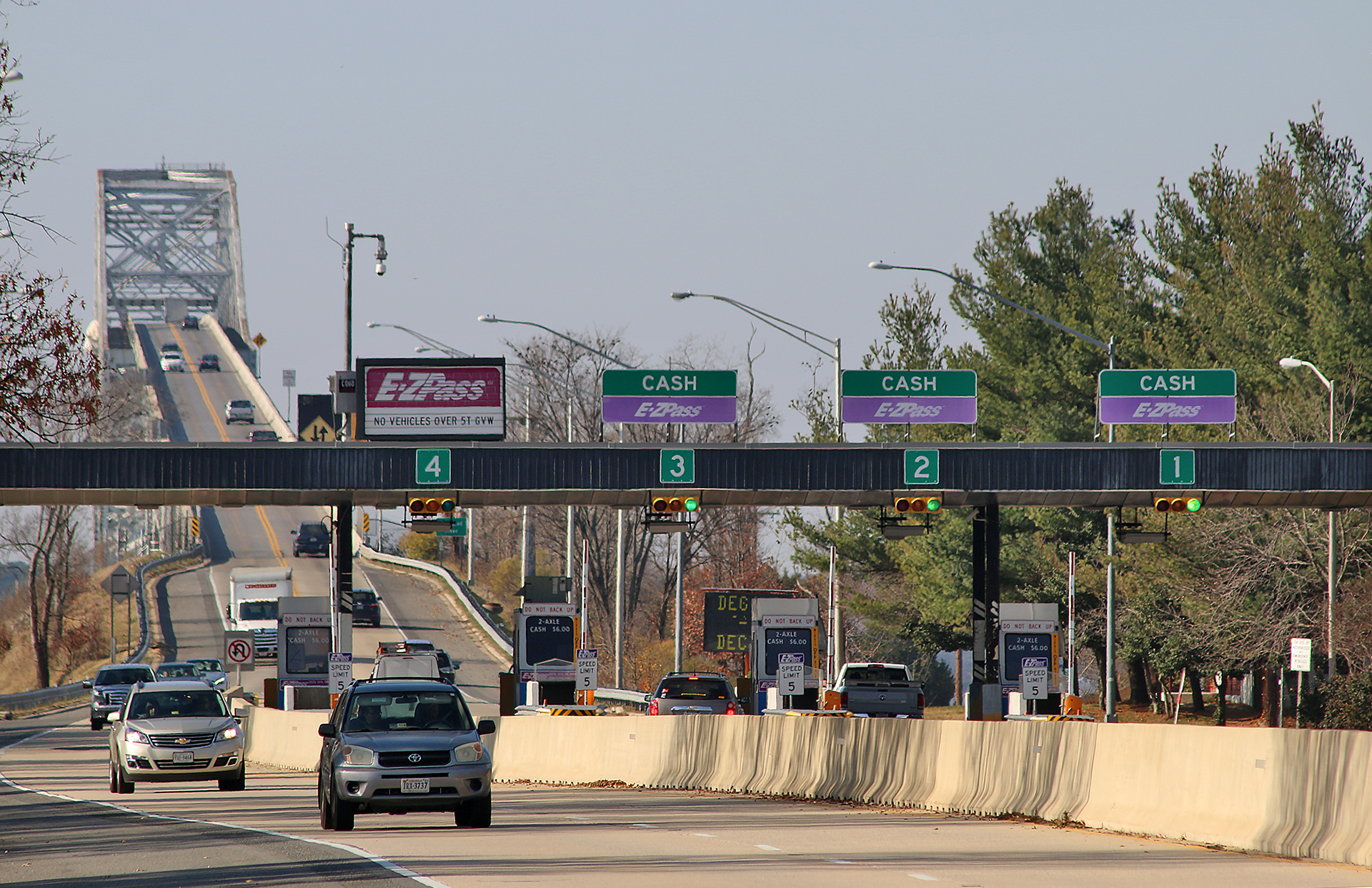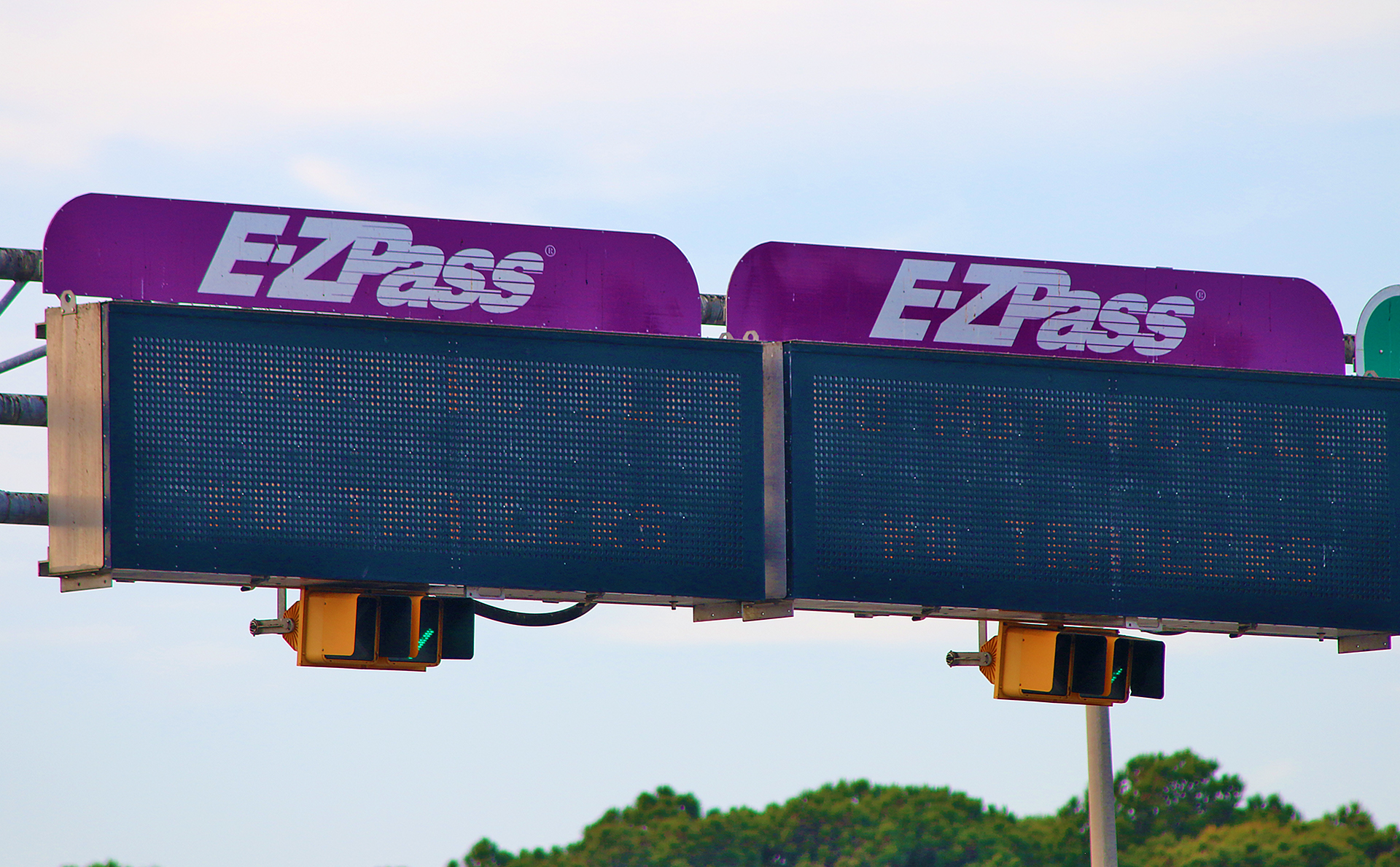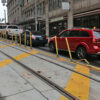Many passengers have experienced the trials and tribulations of traveling by airplane during the summer of 2022, having purchased expensive tickets — only to be met with crowded airports, long lines, lengthy connections, poor or nonexistent service, reduced or eliminated benefits and amenities, and delays or cancelations of their itineraries…
Why Electronic Tolls Are Unfair To Motorists in Rental Vehicles From Out Of State or Country

…so the natural inclination for some people is to travel by motor vehicle, as the driver has more control over the overall itinerary — which can be flexible — and at times, road trips can actually be faster, shorter in duration, less of a hassle than traveling by airplane, and even more fun in general.
One scourge of traveling by car is the practice of requiring drivers to pay a toll — but highways and roads are expensive to build and maintain; so tolls are charged on some of them to fund their creation and maintenance.
Initially, the toll seems like a fair tax, as only the motorists pays to use a highway or road which has tolls, as that is his or her choice — but some issues do exist, as tolls may:
- Seem to be unfair if the highway or road is already subsidized by funds paid by taxpayers — whether or not they use it
- Be difficult to avoid — especially in regions such as the northeastern United States — but that may be by design
- Be expensive on a per-mile basis
A Brief History of Tolls in the United States

Tolls have been used at strategic locations worldwide to collect funds from travelers for centuries — whether they wanted to use a road or a river; or cross over bridges and mountain passes — and the purpose of the toll ranged from funding infrastructure projects to purposes of extortion to simply doing so because the owner of the toll gate could do so with impunity.
“After the American Revolution, the National Government began to realize the importance of westward expansion and trade in the development of the new Nation”, according to this document from the Federal Highway Administration of the Department of Transportation of the United States. “As a result, an era of road building began. This period was marked by the development of turnpike companies, our earliest toll roads in the United States. In 1792, the first turnpike was chartered and became known as the Philadelphia and Lancaster Turnpike in Pennsylvania. It was the first road in America covered with a layer of crushed stone. The boom in turnpike construction began, resulting in the incorporation of more than 50 turnpike companies in Connecticut, 67 in New York, and others in Massachusetts and around the country. A notable turnpike, the Boston-Newburyport Turnpike, was 32 miles long and cost approximately $12,500 per mile to construct.”
The Advent of Electronic Tolls

Toll roads are found in at least 30 states in the United States — and this is not counting states which have bridges or tunnels which require the payment of a toll to use.
William Vickrey — who was awarded the Nobel Memorial Prize in Economic Sciences in 1996 — was the first person to propose a system of electronic toll collection for the metropolitan area of the District of Columbia back in 1959. Italy became the first country in the world to deploy a full electronic toll collection system on its network of motorways nationwide 30 years later in 1989.
Before the advent of electronic tolls, every toll facility in the United States used a common form of payment: the United States dollar. Simply pay the amount required to satisfy the toll and be on your way — no matter where you are based — although one disadvantage was the fumbling for the correct amount of coins and bills to pay the toll…
…but even though they were designed to save money for both motorists and the toll authorities — as well as significantly reduce time at toll plazas by using gantries instead — electronic tolling is still not a unified system at the time this article was written. For example, FasTrak in California is not compatible with E-ZPass, which is a tolling collection program that is used in 19 states.
Dozens of tolling collection programs currently exist around the world. In fact, the United States alone has no fewer than 20 tolling collection programs. Some are completely interoperable with each other; others can be used together on a limited basis; and some do not work with each other at all.
Worse is that even within the same tolling collection program, different options are available. For example, an E-ZPass transponder which is purchased in New York will have different rules, benefits, and pricing versus one which is purchased in Massachusetts.
If a driver is based in an area or region in which tolls are not prevalent and purchasing a transponder from a different state is not a feasible option, they may have no choice but to pass through an electronic toll collection facility or gantry at which no other option to pay the toll is available — and a camera will photograph the license plate of that motor vehicle so that a bill for payment can be sent by the toll collection agency. That driver will often be charged an administrative fee in addition to the toll simply because his or her vehicle was not equipped with a transponder or other device to pay the toll electronically.
Many motorists who have regularly commuted on toll roads for years seemed to applaud the substantial changes in how tolls are collected via technology: no more slowing down or stopping at a toll plaza to pay a live attendant; no more carrying a tray full of coins and bills to pay the tolls; and they even get to enjoy a discount every time they pass under a gantry to electronically pay their tolls — just drive at highway speeds as though tolls did not exist; and pay the total amount owed at the end of the month via credit card — but electronic tolls have not been kind to the visitor who rents a vehicle and drives on toll roads which no longer accept cash. Not only does the toll authority — which operates or oversees toll collection on highways — charge visitors the full price of the toll and extra fees to pay via mail; but rental car companies have also been fleecing their customers in the form of excessive fees.
Electronic tolls may have been hailed as a technological breakthrough when they were first introduced — but they have morphed into complex systems with myriad rules, regulations, and policies which can confuse motorists…
…and many agencies have since increased the amount of the tolls — sometimes often; sometimes significantly more expensive; and sometimes both — which basically renders the savings to the consumer moot.
Electronic Tolls With a Rental Vehicle

When renting a motor vehicle to use on electronic toll roads, the situation potentially worsens significantly more, as rental car companies charge a fee in addition to the toll itself — in addition to the aforementioned potential administrative fee.
In numerous cases, customers who rent cars have even been charged a daily rate for tolls or a toll transponder — even if they never passed under a single toll gantry or used a single toll road.
Keep in mind that the fees listed below as imposed by rental car companies in the United States do not include the charge of the actual toll or any administrative fees by the authority which manages the electronic tolling system:
- Avis — $5.95 fee per day when using a toll up to a maximum limit of $29.75 per rental
- Alamo — $3.95 fee per day when using a toll up to a maximum limit of $19.75 per rental
- Budget — $5.95 fee per day when using a toll up to a maximum limit of $29.75 per rental
- Dollar — $10.49 per rental day or $52.49 per week, which includes all tolls — but if this fee is declined, any toll you fail to pay in cash will cost you an administrative fee of $15.00 per toll
- Enterprise — $3.95 fee per day when using a toll up to a maximum limit of $19.75 per rental
- Firefly — $4.95 fee per day when using a toll up to a maximum limit of $24.75 per rental
- Fox — The price varies: $8.99 per day in Florida; and $11.49 per day in northern California as two examples
- Hertz — $5.95 fee per day when using a toll
- National — $3.95 fee per day when using a toll up to a maximum limit of $19.75 per rental
- Payless — $2.95 fee per day when using a toll up to a maximum limit of $14.75 per rental
- Silvercar — $4.95 fee per reservation
- Sixt — $5.00 fee per toll paid
- Thrifty — $10.49 per rental day or $52.49 per week, which includes all tolls — but decline it; and any toll you fail to pay in cash will cost you an administrative fee of $15.00 per toll
“States have electronic toll collection systems with no human collecting tolls and no way to use a credit card to pay a toll — pandemic travelers should not be unduly punished”, according to this article written by Charlie Leocha, who is the chairman and founder of Travelers United, which is an advocacy membership organization. “Avoiding these automatic tolls takes planning in advance or paying an extra fee. However, travelers should know about the perils of automatic toll collection systems. It seems that the states never take responsibility. Whenever going through a toll, travelers get stuck with the charges if they can’t make payments calling the toll collection office. Penalties are high.”
As can be imagined, electronic tolls when driving rental vehicles can potentially — and quickly — add up to become an expensive proposition. “Dollar Car Rental sent the bill — which arrived several weeks after Dougan already paid $300.81 for a 4-day rental — because Dougan drove on a toll road”, according to this article written by Bob Segall for WTHR Channel 13 News in Indianapolis. “While driving near Charlotte, he incurred four toll charges. Each was small: 40 cents, 48 cents, 85 cents and 29 cents, totaling $2.02 in toll charges. Dougan’s surprise came when he noticed the invoice also included a $15 charge for EACH toll he incurred during his trip. Four small tolls resulted in $60 in ‘administrative fees’ added to the bill.”
In other words, the total amount paid for the tolls and administrative fees was $62.02 instead of $2.02.
How to Save Money On Electronic Tolls — Especially When Driving Rental Vehicles
You can save money on electronic tolls on your road trip — which may cost some extra time with less convenience.
- Avoid toll roads either partially or altogether — Use a software application platform for navigation and maps — such as Google Maps and Apple Maps as two examples — to map out a route which avoids as many tolls. Some tolls are incredibly easy to avoid; while others are almost impossible to avoid.
- Know how much you will be charged for tolls — Although several toll calculator software application programs exist — some for an extra nominal cost — the capability of calculating the total cost of tolls was recently included in the Google Maps mobile software application program at no extra charge, as the capability is not yet available on the desktop version of the software.
- Use cash toll lanes when available — This tried and true method still works even though extra time may be consumed by waiting in line and either dealing with an attendant in a toll booth or accidentally missing the basket when dropping change to pay the toll — but no extra charges will be imposed by using this method, which is becoming less and less common as more toll authorities are increasingly offering electronic tolls as the only option instead of as an added option.
- Toll transponders when renting a vehicle — this category is separated into three subcategories:
- Close or block the toll transponder in the rental vehicle — If your rental car comes with a toll transponder and you do not want to use it, try to close it off. These transponders are usually mounted in a lead-lined box that opens and closes — and closing the box hides it so that the electronic indicator at the toll plaza cannot see it. Use a lane that accepts cash, and you can then pay cash for your toll. For extra protection from being accidentally charged for a toll electronically, you can get a special bag which blocks devices from wireless signals.
- Use the toll transponder from your own vehicle — If your own vehicle already is equipped with a toll transponder, bring it with you; and then — when you pick up the rental car — either call the provider or log into your account online to add the license plate of the rental vehicle. If you travel frequently, consider ordering a second transponder on your account to keep in your travel bag.
- Purchase your own toll transponder — Toll transponders can be inexpensive and easy to obtain if you do not already have one — even if you do not live in a state with toll roads — but knowing which one to purchase and from where can be confusing.
With regard to more details on how to choose the best toll transponder for your needs, “If you’ll be traveling in the Eastern US (Illinois to Florida to Maine) where tolls are handled by the E-ZPass consortium, we recommend ordering a transponder from Massachusetts — since there is no monthly fee and the cost of the transponder gets credited to your account and made available for tolls”, according to this article from the official weblog of AutoSlash. “For the Southeastern US (North Carolina to Florida), E-ZPass will also work, depending on your route. Alternatively, we also recommend the E-PASS from the Central Florida Expressway Authority since it’s cheaper than the more popular SunPass. And for the central US (Kansas to Texas), a MyKTAG from Kansas is the best option. A portable hard-case transponder that works everywhere in Texas, Oklahoma and Kansas costs $25, or you can get the sticker version for free (they’re not meant to be portable, but we’ve had good luck just holding the sticker firmly against the windshield), and you aren’t required to prepay as long as you sign up with a valid credit card.”
As part of the good advice which is imparted in this article pertaining to traveling on toll roads in rental vehicles, another recommendation from AutoSlash — which is a service that potentially saves you money on rental vehicles by search for the best offers out of hundreds of different discount codes and coupons — is that “By our calculations, the best-value toll transponder is the NC Quick Pass, which costs less than many other toll passes and is good for travel in 18 states.”
Final Boarding Call

I have generally been against the concept of charging motorists for tolls — especially if money from taxpayers is used to fund some of the expenses of the road or highway — but I can also understand the necessity for some roads or highways to charge motorists for their use.
Ideally, motorists should have choices available to them when driving anywhere in the world in terms of tolls. If a road or a highway must have a toll system, they should offer at least three choices:
- Electronic toll lanes as the speediest option
- At least one lane for the use of credit cards with an automated device
- At least one lane for the manual collection of currency
Paying a toll by mail or telephone call is cumbersome; can cost extra; and can potentially lead to clerical errors or mistakes that can cost the consumer. Just ask anyone who has had issues with the controversial Provincial Highway 407 Express Toll Route in Ontario, which have plagued the greater Toronto metropolitan area for almost 20 years.
An automated toll payment solution for visitors to Florida who rent a vehicle from a facility at Orlando International Airport called Visitor Toll Pass — which was initially piloted by the Central Florida Expressway Authority back in 2019 — had become permanent as of last year and should be considered by other toll authorities worldwide to be adopted. Even though travelers must pick up and return their rental vehicles at Orlando International Airport, visitors may reserve Visitor Toll Pass free of charge — as no service fee is required to obtain and use it — and use it to pay tolls on all toll roads and most bridges throughout the state of Florida.
The bottom line is that motorists who visit from out of state or country — especially those who are driving a rental vehicle — should not be unfairly penalized at the toll booth or gantry simply because they may be based in an area where tolls are not prevalent.
Other articles at The Gate which pertain to the topic of electronic tolls include:
- How Visitors in Rental Cars Should Pay Electronic Tolls is Permanent in This State
- New York to Drop Domestic Quarantine Requirement — And Increase Tolls
- Is This a Good Way to Pay For Electronic Tolls?
- Why Governments are Hypocritical in Forcing Businesses to Accept Cash
- This is How Visitors in Rental Cars Should Pay Electronic Tolls
- Hertz Sued by San Francisco Over Fees For Electronic Tolls
- Are Fees Out of Control for Electronic Tolls Using Rental Cars?
- The Pain of Electronic Tolls is Felt by More and More FlyerTalk Members
- Electronic Tolls in South Africa: Economic Apartheid?
- Are Rental Car Companies Taking an Electronic Toll On You — Literally?
- $17,000 Fine For $36 in Unpaid Electronic Tolls?
- Electronic Tolls and Rental Car Companies: Outrageous Gouging?
- Not Paying a Toll Can Take a Toll — On You
All photographs ©2017 and ©2021 by Brian Cohen.

